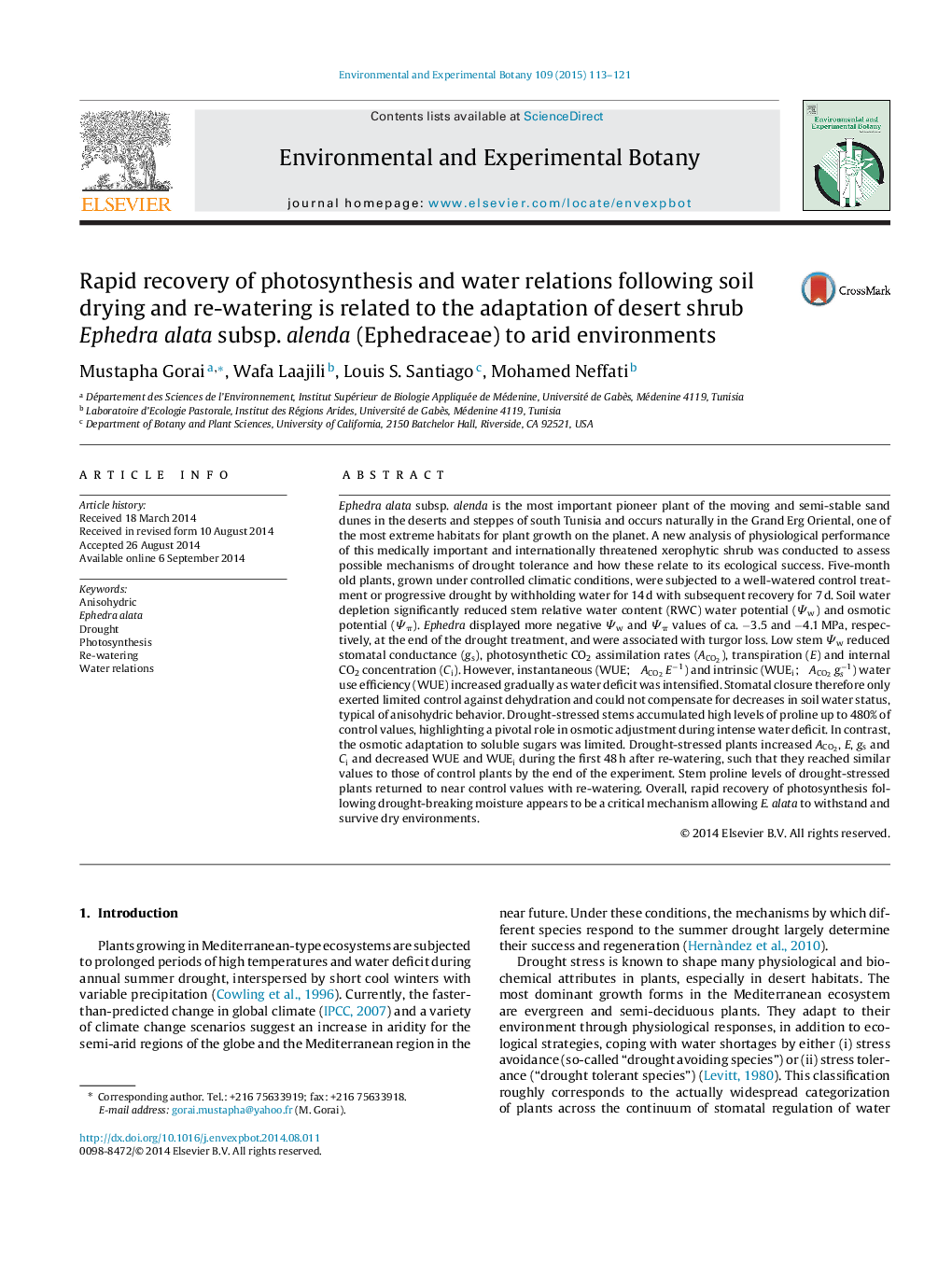| کد مقاله | کد نشریه | سال انتشار | مقاله انگلیسی | نسخه تمام متن |
|---|---|---|---|---|
| 4554324 | 1628068 | 2015 | 9 صفحه PDF | دانلود رایگان |

• The perennial xerophyte Ephedra alata has both ecological and economical benefits.
• Ephedra mainly shows anisohydric mechanisms to cope with drought.
• There is a trade-off between water loss and carbon gain experienced by plants.
• Proline contributed to increased drought tolerance through osmotic adjustment.
• Rapid recovery of photosynthetic performance after re-watering.
Ephedra alata subsp. alenda is the most important pioneer plant of the moving and semi-stable sand dunes in the deserts and steppes of south Tunisia and occurs naturally in the Grand Erg Oriental, one of the most extreme habitats for plant growth on the planet. A new analysis of physiological performance of this medically important and internationally threatened xerophytic shrub was conducted to assess possible mechanisms of drought tolerance and how these relate to its ecological success. Five-month old plants, grown under controlled climatic conditions, were subjected to a well-watered control treatment or progressive drought by withholding water for 14 d with subsequent recovery for 7 d. Soil water depletion significantly reduced stem relative water content (RWC) water potential (Ψw) and osmotic potential (Ψπ). Ephedra displayed more negative Ψw and Ψπ values of ca. −3.5 and −4.1 MPa, respectively, at the end of the drought treatment, and were associated with turgor loss. Low stem Ψw reduced stomatal conductance (gs), photosynthetic CO2 assimilation rates (ACO2)(ACO2), transpiration (E) and internal CO2 concentration (Ci). However, instantaneous (WUE; ACO2 E−1)(WUE; ACO2 E−1) and intrinsic (WUEi; ACO2 gs−1) water use efficiency (WUE) increased gradually as water deficit was intensified. Stomatal closure therefore only exerted limited control against dehydration and could not compensate for decreases in soil water status, typical of anisohydric behavior. Drought-stressed stems accumulated high levels of proline up to 480% of control values, highlighting a pivotal role in osmotic adjustment during intense water deficit. In contrast, the osmotic adaptation to soluble sugars was limited. Drought-stressed plants increased ACO2ACO2, E, gs and Ci and decreased WUE and WUEi during the first 48 h after re-watering, such that they reached similar values to those of control plants by the end of the experiment. Stem proline levels of drought-stressed plants returned to near control values with re-watering. Overall, rapid recovery of photosynthesis following drought-breaking moisture appears to be a critical mechanism allowing E. alata to withstand and survive dry environments.
Journal: Environmental and Experimental Botany - Volume 109, January 2015, Pages 113–121